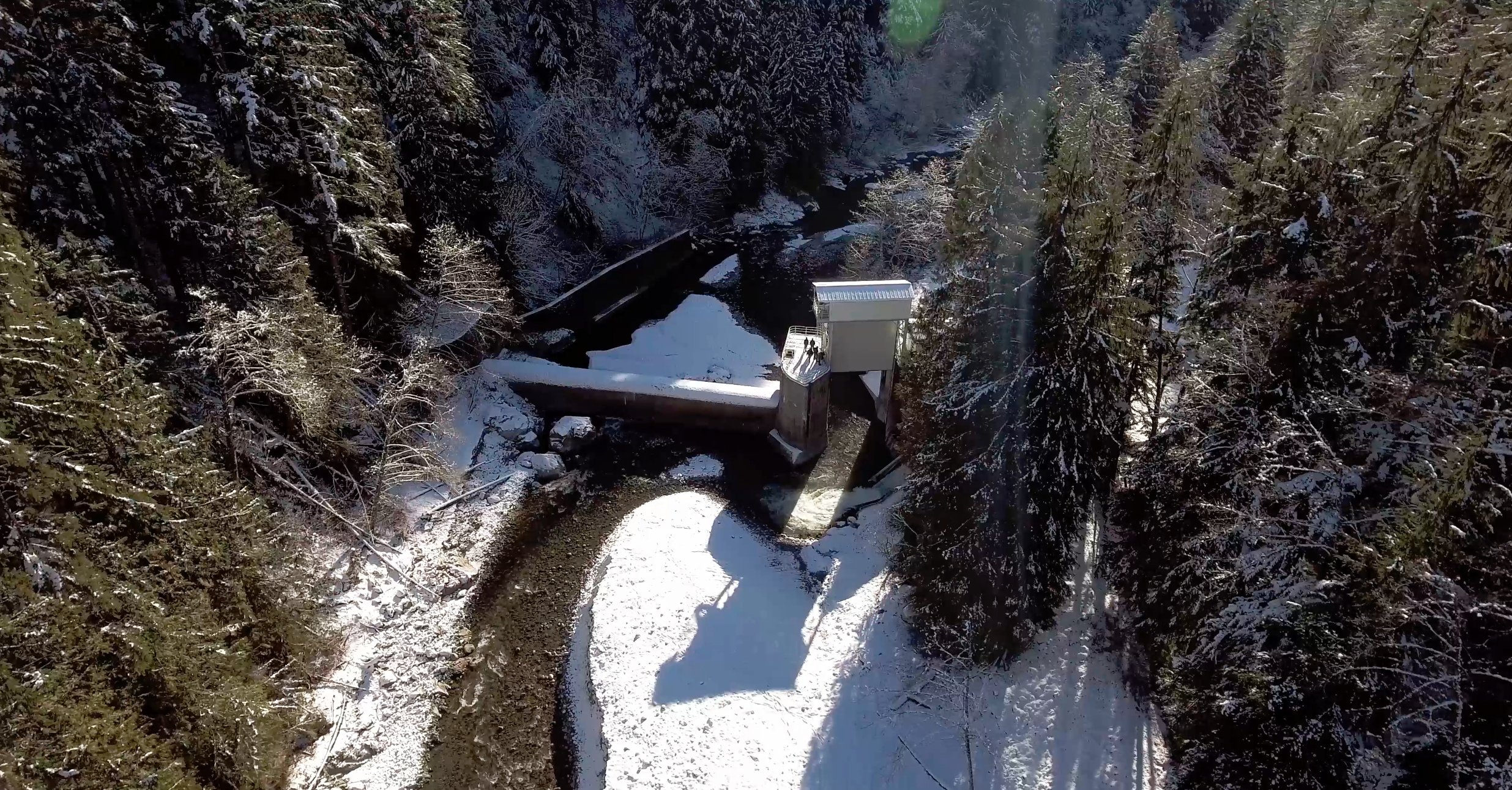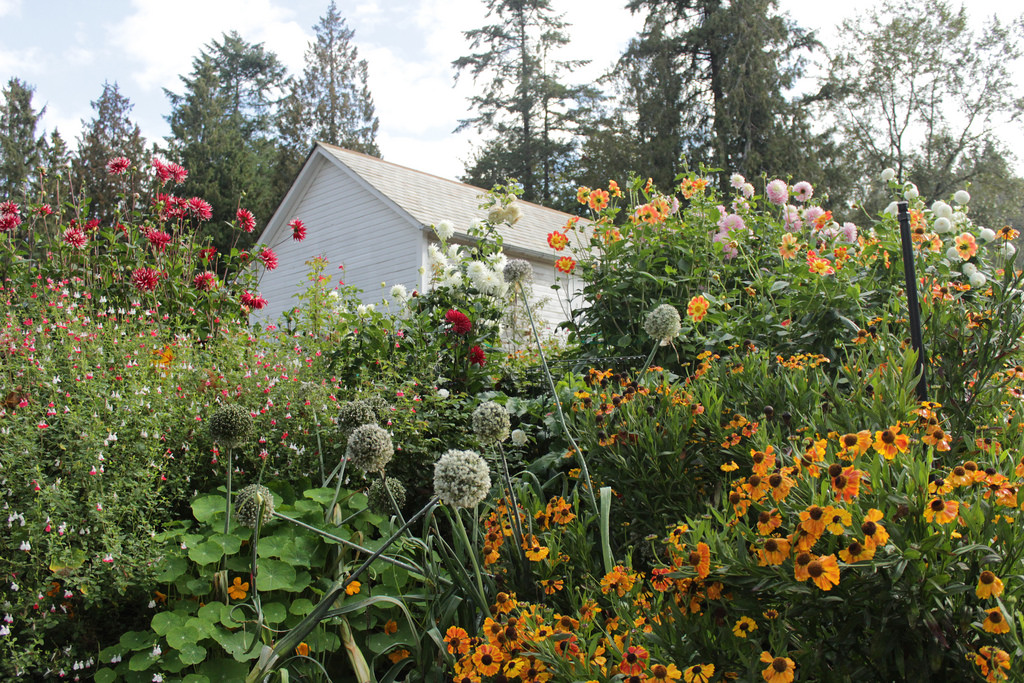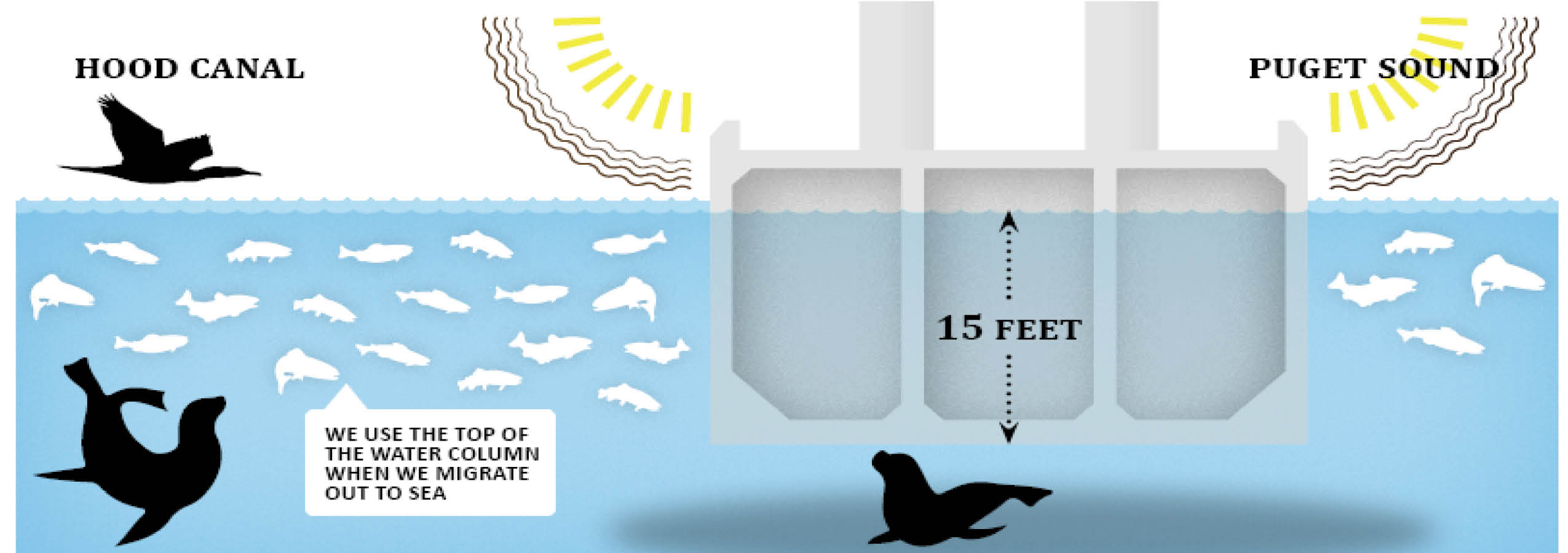Partners restore imperiled summer chum salmon and shellfish in Clallam County Jimmycomelately Creek and its estuary in Clallam County are now home to a robust population of ESA-listed summer chum salmon as well as a thriving commercial shellfish operation. This...
Efforts to improve food and resting areas for salmon include a broad range of projects: restoring nearshore beaches, providing cleaner estuaries, and removing fish barriers in rivers and streams. Protection and restoration projects that produce side channels and backwater habitat in the floodplain provide essential salmon refuge from predators, rest during migration, and opportunities for feeding. Restored estuaries allow salmon to return to lay their eggs as soon as habitat is available.
Sultan River Diversion Dam Modification
Salmon return to Upper Sultan River after 90 years For the first time in 90 years, salmon are using 6.5-miles of stream habitat in the upper Sultan River, thanks to an innovative project by the Snohomish County PUD that opened the river for fish passage past the...
Salmon Creek Estuary Restoration
Restoring an old mill site to benefit salmon, shellfish, and people The Salmon Creek and Snow Creek estuaries are located within a half-mile from each other in Discovery Bay, forming a complex system of salt and freshwater interchange where young salmon get used to...
Using Beavers for Salmon Habitat Restoration
Protecting wildlife and helping landowners builds salmon habitat naturally The Tulalip Tribes are collaborating with an unlikely partner to restore habitat for salmon: beavers. For four years, the Tribe has relocated about 100 beavers from private lands in the...
Union River Estuary Restoration
Restoring habitat and connecting people and salmon The Hood Canal Salmon Enhancement Group and the Washington Department of Fish and Wildlife collaborated to return ocean tides to restore salt marsh habitat in the lower Union River, which is part of the larger Lynch...
Maynard Nearshore Restoration
Removing defunct infrastructure to protect fish and shellfish The Maynard Nearshore Restoration Project is located at the head of Discovery Bay in Jefferson County. Salmon and Snow Creek enter the bay within a half-mile of one another forming an estuary that...
West Beach Creek Dam Removal
Restoring the connection between stream and sea West Beach Creek is one of the few streams in the San Juan Islands without a natural barrier, and so it was historically accessible to salmon. The Northwest Straits Foundation removed a small dam that had been built to...
Making connections for salmon in the Skagit
Photo credit: Eric Mickelson, Skagit River System Cooperative Project Summary Illabot Creek is a highly productive tributary of the upper Skagit River that supports relatively large populations of Chinook, chum, coho, and pink salmon, native char, and steelhead trout....
Ballard Locks
Congressional District: 7 Legislative Districts: 36 WRIA: 8 City, County: Seattle, King County Project Summary: The Hiram M. Chittenden (Ballard) Locks, operated by the U.S. Army Corps of Engineers (Corps), are critical to the region's economy, transportation and...
Moga Farm Restoration Project
CONGRESSIONAL DISTRICT: 01 LEGISLATIVE DISTRICT: 39 WRIA: 7 CITY, COUNTY: Snohomish, Snohomish County PROJECT SUMMARY The Snohomish River is the second largest producer of Endangered Species Act-listed Chinook salmon in the Puget Sound. The Moga Farm...
Cherry Creek Restoration Project
CONGRESSIONAL DISTRICT: 01 LEGISLATIVE DISTRICT: 45 WRIA: 7 CITY, COUNTY: Duvall, King County COST: $703,000 PROJECT SUMMARY Cherry Creek is the Snoqualmie River's lowest major tributary; its location provides high recovery-benefit potential for Chinook, Coho, and...
Fir Island Restoration
CONGRESSIONAL DISTRICT: 2 LEGISLATIVE DISTRICT: 10 WRIA: 3 CITY, COUNTY: Skagit, Skagit County Project Summary The Skagit River and its delta provide habitat to some of the largest runs of Chinook, pink, and chum salmon in the state. Tidal wetlands protect and feed...
Lyre Conservation Area
CONGRESSIONAL DISTRICT: 6 LEGISLATIVE DISTRICT: 24 WRIA: 18 CITY, COUNTY: Dungeness, Clallam County Project Summary The Western Strait of Juan de Fuca, a migratory corridor for Puget Sound salmon, is characterized by small pocket estuaries and high-energy beaches. The...
Calistoga Levee Setback
CONGRESSIONAL DISTRICT: 8 LEGISLATIVE DISTRICT: 2 WRIA: 10 CITY, COUNTY: Orting, Pierce County Project Summary Man-made levee systems disconnect the river from its floodplain and prevented the large river systems from meandering. In Orting, the Puyallup River would...
Smith Island
The Smith Island Estuary Restoration Project will benefit threatened salmon, restore ecological systems, and improve flood control and recreation across the region by: Removing a historic levee, excavating channel networks, and installing wood placements to improve...
Salish Sea Marine Survival
Endangered Species Act listed Puget Sound Chinook salmon populations have plummeted by 50% since the mid-80s and steelhead have experienced even steeper declines. Research points to marine survival as the missing link to recovery. The Salish Sea Marine Survival...
Nooksack River
A habitat restoration effort on the Nooksack River aims to help two important populations of Puget Sound Chinook salmon recover from dangerously low numbers. As with other salmon recovery actions undertaken by the Nooksack Indian Tribe, the goal of the...
Lower Dungeness River
The Lower Dungeness River Floodplain Restoration project is a collaborative effort to restore floodplain habitats, keep people safe, support agriculture, improve water quality and quantity, and provide people with recreational access. State and federally funded...
Cranberry Creek
Cranberry Creek, a tributary to the Stillaguamish River, is home to endangered steelhead and bull trout. It is also an important salmon spawning stream, but an old, corroding culvert was preventing migrating fish from getting where they needed to go. A culvert...
Cedar River Knotweed Removal
Stewardship in action: removing invasive knotweed one property at a time Invasive knotweed is an aggressive invader of riparian habitats throughout Western Washington. The plant displaces native vegetation and destabilizes riverbanks, disrupting natural habitat...
Qwuloolt Estuary Restoration
Led by the Tulalip Tribes, the Qwuloolt Estuary restoration is one of the largest restoration projects in Puget Sound. (Qwuloolt is the Lushootseed word for "marsh.") Located within the Snohomish River floodplain, the estuary historically encompassed tidal...
Skokomish Estuary Restoration
The Skokomish River floods more frequently than any river in Washington, and yet the river channel often goes dry during Chinook salmon migration. This is because nearly half of the Skokomish River estuary had been converted to diked farmland, which contributed to...
Rainbow Bend
Rainbow Bend on the Cedar River was the site of an ambitions levee removal and floodplain restoration project that provided flood risk reduction benefits and restored salmon habitat. The project's first stage included buying a flood-prone mobile home park and...
Clarks Creek
Clarks Creek near the city of Puyallup was the site of a recent study conducted by the Puyallup Tribe of Indians. The two-year study examined sediment sources throughout the creek, and investigators found that if 23 major sources of sediment were repaired, more...
Dickerson Creek
Dickerson Creek's upper reaches have some of the best salmon spawning and rearing habitat in Puget Sound. But Dickerson Creek and adjacent Chico Creek have been affected by streamside residential development and aging, undersized culverts. The culverts were identified...


























